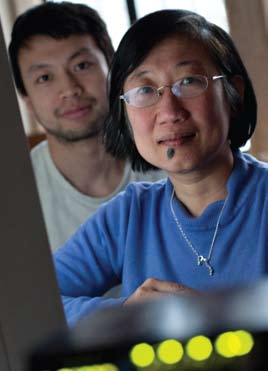Driving from Lehigh’s campus to her home in Allentown, Pa., Mooi Choo Chuah, an expert in wireless network security and routing, finds it difficult to leave her work behind.
Chuah’s daily commute requires her to take either U.S. Route 22 or I-78, both of which are notorious for accidents and delays.
The congestion may vex other drivers, but it brings out the dreamer in Chuah.
If a traffic jam does occur, she wonders, could a voice-activated wireless system, using laptops or PDAs in cars as nodes, or connecting points, allow some drivers to quickly warn those following several miles behind to take a different route?
What if there is an AMBER Alert? Could an image of the kidnapped child be promptly flashed on LED billboards near the area where the child disappeared? The image could be uploaded to the billboards via wireless links.
Chuah, an associate professor of computer science and engineering, has completed two of three phases in a 4½-year project titled “Enhanced Disruption/Fault Tolerant Bundle Delivery System,” or EDIFY. The project is funded by DARPA through its DTN (Disruption Tolerant Network) program. DTNs represent one of the key technologies for next-generation networks. Chuah and her students, working with researchers from the Georgia Institute of Technology, the University of Massachusetts at Amherst and BBN Technologies, are developing networking and security technologies for DTNs.
One of the goals of EDIFY, says Chuah, is to design new network protocol software systems. One of these systems will ensure wireless message delivery in environments whose nodes are only intermittently connected. Another will enable messages that are transmitted through these environments, or through several wireless domains, to remain encrypted until they are received by a person with authority to open them.
Another new feature being developed, called “late binding,” will allow Internet users to send messages to a specified group of recipients without identifying them by Internet protocol (IP) address. For example, notification of a bank robbery in progress could be sent to all police cars that happen to be within 1 or 2 kilometers of the crime.
“The beauty of this feature,” says Chuah, “is that the sender does not have to know the names or IP addresses of the people to whom the message is being transmitted. The late binding feature supported in DTN will allow recipients to be identified later as the message moves closer to the destination region.”

